 Your new post is loading...
 Your new post is loading...
It seems like every few months a new buzzword gets thrown around and this month’s buzzword is MAdTech. “Have you heard about MAdTech? It’s going to be game changing!!” Oh really? While I appreciate the excitement that the buzz creates, the excitement seems to revolve more around the hopes of change than around utilizing a viable solution and innovative technique to get results. So, what exactly is MAdtech? Well, to put it concisely: it is the combination of Marketing technology and Advertising technology, hence “M+Ad = MAd”.1 Let’s examine what MAdtech means for the automotive industry, and how your dealership can smash the competition with this powerful capability....
In honor of the people doing their best to make functional adults, Minute Maid has launched "The Holiday Store with Nothing to Sell." At this paradoxical little pop-up, crammed with sparkly snowflakes and light-drenched Christmas trees, kids walk in and write letters to their parents while sipping on orange juice. (Hemingway would cringe.) The letters are boxed up and wrapped in pale green paper. In the video below, watch five kids reflect on their letters, and the parents' reactions upon opening the gifts.
"She's gonna probably have a confused kinda look," one daughter predicts. "She's gonna think it's maybe, like, a ring, or a bracelet...?"
But no, it will be none of those things!...
The Interactive Advertising Bureau estimates malicious advertising ”malvertising” costs the U.S. digital marketing, advertising, and media industry $8.2 billion annually. A few years ago malvertising was merely scamming the system: fake ads, fake traffic, fake analytics. Ad tech is a hacker's heaven, an unregulated labyrinth of circumlocution systems for bidding, placing and tracking ads. "All the code is awful and you aren't allowed to change it anyway," says Salon developer Aram Zucker-Scharff. "Usually ad servers claim they run some sort of checks, but considering just how many malicious or badly formed ads get through, it is pretty apparent they don't do much." The hacker's goal is to bill, aka bilk, advertisers for ads no human ever saw. Their fraud takes several forms: Ad stacking piles multiple ads on top of each other. Ad stuffing shrinks ads to invisible 1-pixel squares. Click farms send fraud users to real sites. Clickjacking sends real users to fraud sites....
If you've lived or worked in a downtown as it came back from the brink of blight, you know that one bold business idea can be the tipping point. Whether it's a brewery based in an abandoned warehouse or a gourmet coffee shop that reclaimed an old fire station, these entrepreneurs can often offer a proof of concept and end up reversing decades of decline. Heineken captures this frequent reality in a new spot called "The Canvas," part of the international brewer's years-long push that promotes urban pride, creativity and revitalization.In the new spot (likely from Publicis, though we've reached out for agency and production credits), we see a trio of guys getting tossed out of a beer shop at closing time, only to find the rest of the neighborhood vacated....
The landscape of content is evolving. In an age where most advertisements fall victim to the "skip" button, it takes something truly creative to make people pay attention.It's no longer enough to simply create a straightforward ad -- to shine, content must make us laugh, cry, think, and believe. There is no bigger stage for celebrating advertising that moves us than the Cannes Lions International Festival of Creativity. This year's recipients blur the line between marketing and art, delivering pieces of content that push the boundaries of media.Get inspired by 21 of the best below....
The shift in focus to paid social media content is redefining, yet again, the role of the PR professional—a topic that Kellis will dive into in his opening Wake-Up Call session at PR News' Big 4 Social Media Summit, which will be held in San Francisco on Aug. 10. In a way, paid social is bringing public relations full circle.
"At least at Clorox, earned media now comes from creating social media ads that people will share," says Kellis, who leads the social media function for all of Clorox’s brands, including Hidden Valley, Clorox-branded products and Glad. "In the past, we’ve done PR around advertising in magazines and other media. That’s what we’ve come to with social. We’re doing PR to get earned media impressions from the sharing of social media ads. The earned part is critical, because we’re no longer measuring organic social campaigns—that’s completely out the window."
It's unclear if the Brexit will have any specific effects on the digital media industry in the short or long term, but there are numerous potential consequences already on the table.
Earlier this month, Group M, the global media arm of WPP, tweaked its TV and newspaper ad spend forecast to compensate for a potential Brexit, according to The Guardian. Previous forecasts said U.K. TV ad spend would grow 7.1% in 2016, but that number drastically reduced to 2.6%. Furthermore, Group M lowered its total U.K. ad spend growth estimates from 7.2% to 6.3%.
This decrease stemmed from ad buyers' hesitation to spend money in the weeks before the referendum. Had the U.K. voted to remain in the EU, the ad market likely would have stabilized. But a vote to leave would have placed more downward pressure on U.K. ad spend, according to Sir Martin Sorrell, the CEO of WPP.
But even with these adjustments, the estimates still place the U.K. as one of the fastest-growing ad markets.
Ryanair, the Irish low-cost airline, is 24-hour £9.99 flash sale for people who "need a getaway" after the UK voted to leave the European Union. An ad for the promotion on Twitter takes on the famous "hear no evil, see no evil, speak no evil" monkeys and replaces them with UKIP leader Nigel Farage, former London Mayor Boris Johnson, and justice secretary Michael Gove - the leading three figures of the Leave campaign. Ryanair, was firmly in the Remain camp - so much so that it had sent out a marketing email earlier on Friday morning - hours ahead of the official referendum results - to promote the sale, reading: "Celebrate remaining in Europe with 1 million seats from £9.99."...
Cannes Lions 2016 has its first truly cringeworthy moment, in the form of a party invitation seeking "attractive females and models only." The email went out to a number of festival participants who planned to attend The Wednesday Party, an event sponsored by digital agency VaynerMedia and media company Thrillist Media Group with a musical performance by Wyclef Jean. UPDATE: Thrillist founder and CEO Ben Lerer responded to the controversy via an internal staff email that appears in part at the bottom of this story. A female agency executive tells Adweek that she and two female colleagues received the email while having lunch in Cannes on Tuesday. One of them forwarded it to women's advocate and agency veteran Cindy Gallop, who subsequently shared it on Twitter and wrote, "It's 2016, @vaynermedia @thrillist. This is not how you party at @cannes_lions." The email was sent by events company iGetIn. Its key section reads (emphasis via the sender of the message): "Thank you for your interest in attending!! Please be aware that this specific list is for attractive females and models only." The note, which was also shared by members of the public Facebook group Cannes for Cannesseurs, then instructs male attendees to "contact the PR departments of the respective sponsors" if they want to get into the party. It requests that women interested in attending send "recent untouched photos and/or your Instagram/Facebook links for you and each of your additional female guest [sic]," adding, "once we have reviewed we will send you specific entry details." ...
Some pundits say the advertising industry is in big trouble, its business model is broken, the "big idea" is dead, it can’t do tech and so on. There is no shortage of pessimism and, it has to be said, some of it is valid. The days of an award-laden creative chief ensconced in his (always, his) corner office overseeing a couple of 60-second blockbuster TV ads per year, costing the client millions, are more or less over. It's no secret that the industry has struggled to adapt quickly enough to the changing world.
But if the excellence of the ideas that took the 2016 Future Lions, the Cannes Lions Advertising Festival's student awards, is anything to go by, hope is at hand.
The Future Lions began in 2006 and is a collaboration between the Festival and agency AKQA. Anyone in full-time education may enter and this year, more than 1,900 students from 69 countries did....
Many people believe that marketing and advertising has changed so much that looking toward the past is futile. Innovation, new technology and tools, and disrupting ideas are the focus of both headlines and boardroom conversations.
What can we even learn from history that would be relevant for today?
First of all, that much of what makes a brand successful today is the same as it was 10, 50, and 100 years ago. And the challenges agencies help their clients overcome are nothing novel.
By understanding the past, we can more clearly understand what's been done, what's really "new," and the models we can emulate for future success. We can also better understand why certain business practices exist, which provides context when making changes and improvements.
It's worth looking back to understand our current situation and how we can build a better industry for the future. That's why we've created a timeline that details the most memorable moments in the history of advertising and agencies. Click here to get a glimpse at the past....
This billboard, which went up this week next to the Gardiner Expressway in Toronto, is provocative in the extreme—blatantly urging drivers to text and drive as a way of drumming up business for the advertiser, Wathan Funeral Home.
But there's a method to the madness.
It's actually a PSA from the Montreal office of agency John St., in partnership with out-of-home company Cieslok Media. No, Wathan Funeral Home isn't real. But it does have a website, where angry motorists who've Googled the place are confronted with this message:
If you're here, you've probably seen our "Text and Drive" billboard. And if you have, you probably came to this website to tell us what horrible people we are for running an ad like that. And you'd be right. It is a horrible thing for a funeral home to do. But we're not a funeral home. We're just trying to get Canadians to stop texting and driving, which is projected to kill more people in Ontario this year than drinking and driving. That's right. More. And while most people wouldn't even think about drinking and driving, over half of Ontario drivers admit to reading texts while behind the wheel. That's more than half of the drivers on the road today risking their lives, their passengers' lives and the lives of their fellow motorists and pedestrians. Which should make you even madder than our billboard did....
It seems like advertising is facing its Judgement Day.
Advertising is not going anywhere, but like every industry, disruption comes... and it comes fast. Many thought that the ad business became disrupted as social media's popularity was rising. It turns out that we're facing the mainstreaming today of smartphones and now Facebook (which, actually, started out ten-plus years ago) that is causing the major waves today. The other week, the 4A's hosted their Transformation conference in Miami. That gem about Facebook and smartphones? That was only one of the many great nuggets that Rishad Tobaccowala (Chief Strategist, Publicis Groupe) brings forth in this panel discussion about the future of the ad industry. Rishad is joined by Rob Norman (Chief Digital Officer, GroupM) and Scott Hagedorn (CEO, Annalect), and this is a highly intellectual and pragmatic look at where - exactly - the industry sits. It's an important conversation for all of us to watch and think about.
|
One of Cinnabon’s most noteworthy, pop-culture-focused marketing campaigns and partnerships came about by chance. You might even say it was a bit of luck. When AMC aired one of its final episodes of Breaking Bad, Saul Goodman (played by Bob Odenkirk) said, “If I’m lucky, in a month from now, best-case scenario, I’m managing a Cinnabon in Omaha.”
The Cinnabon social team quickly capitalized on the mention and tweeted a link to the brand’s careers page to Odenkirk. Soon after that, Cinnabon and the AMC show partnered, with the brand creating a series of campaigns around new seasons as a way to keep itself at the forefront of pop culture and move away from being thought of as simply a mall-based chain.
“The organic nature of the partnership comes from such a good place, and to hear the creators of the show talk about why they were excited when that happened and how it made sense for the vision they had for the show—it just felt organic and therefore very authentic,” said Jill Thomas, vp of global marketing for Cinnabon....
Hey, remember the good old days before smartphones? That golden age where you actually had to use a landline to contact friends, use paper maps and log on to a whirring desktop computer to access the Internet? Well, guess what, many of today’s young influencers and consumers of the future don’t.
In fact, even if your earliest memories of a mobile phone are a chunky Motorola, you could probably take a tip or two from the younger generation to inform your content marketing efforts. Why? Because they are the connected generation, brought up on social media and smartphone use. They will see your snake game and raise you a Pokemon or three and this is all from the age of 11.
Of course, your target audience might not fall into the teenage or early twenty-something bracket. But in a world where Eric Lassard, a boy of 12, has (amongst other ventures) launched an app, social platform and is publishing his second book, ‘From Dublin to Silicon Valley’, perhaps your business might pick up a tip or two straight out of the mouths of babes. For connecting with millennials and those that come after is the future of your business…
Tourism campaigns for Caribbean destinations often have a similar aesthetic—sandy beaches, honeymooning couples, frosty drinks by the pool. But the Belize Tourism Board and its agency, Olson, had enough of that. For its latest ad campaigns, the BTB focused on local experiences unique to Belize and making flying to the country easier. Three years ago, Olson started working with the BTB, launching "Discover How to Be," a campaign that showcased the country's culture and experiences you can have there. Olson and the BTB also worked with Southwest Airlines and WestJet Airlines to open up more routes and direct flights to Belize from the U.S. and Canada. The strategy worked—the campaign was responsible for increasing travel to Belize and boosting the country's GDP by 2.24 percent, according to the Central Bank of Belize.
BrandShare Content
"We set rules from the beginning—no honeymooners, no frozen drinks, nobody getting a massage by the pool," said Kevin McKeon, chief creative officer at Olson. "We want to go for someone who's a little more ambitious about what they're looking for in a vacation. The takeaway is you're going to meet some fascinating people and come back with a story you didn't expect to have."
Its latest campaign, "A Curious Place," which launched this week, continues that theme. Videos feature a cacao farmer, a meat pie seller and "Coconut Leo," a Belizean who climbs trees upside down and cuts down coconuts.
Sometimes, it takes an entire village … to answer the telephone.
To wit: Tschlin, a bucolic community nestled in the majestic mountains of eastern Switzerland's Graubünden region, is famed for being so peaceful, so quiet, that when the phone rings in the village square, the whole population of 166 can hear it.
So, what could be better than a tourism campaign designed to shatter the alpine serenity by making that phone ring constantly, right?
Last month, Jung von Matt/Limmat staged a six-day promotion in Tschlin, inviting folks from far away to call the village-square telephone. Each time a resident failed to pick up, the caller would win a Graubünden vacation or other prizes....
There’s a widening gap between how marketers and consumers feel about brands collecting data and tracking customer journeys. According to a recent report by Edelman and The University of Cambridge Psychometrics Centre, 77% of marketers believe their organization should invest in predictive data and 71% of consumers believe that brands with access to personal data are using it unethically. Much of this data is collected by tracking customer journeys, which has gotten more complicated as consumers juggle devices over the course of considering and making a purchase. An OMD report revealed that people swap devices 21 times an hour. The traditional tracking cookie falls short....
Shared universes. They're so hot right now. Long before the deep bench of Marvel superheroes started jumping into each other's movies, however, there was something else that united the far-flung worlds of many different movies and shows: fake brands.
Call it product displacement. When the producers of a movie or TV show prefer not to shell out money to get a real brand onscreen, they opt for the unreal.
Marlboro-lookalike, Morley Cigarettes has been tarring the arteries of fictional characters for years, while the preferred chip of cinematic snackers is often Let's. It turns out, however, that many more movies and shows share the same fake brands than one might expect. British-based freelance hub fivesquid has just released an infographic about this phenomenon that shows which brands and products indirectly fueled some unlikely crossovers.
Some are obvious. Anyone who's seen a Quentin Tarantino movie, for instance, knows that Big Kahuna Burger is a thread throughout the self-contained Tarantino-verse. It should come as something of a reality-testing surprise, however, to see the same beer brand appear in both Star Trek and Brooklyn Nine-Nine. I mean, come on: The U.S.S. Enterprise would have its own microbrew, for sure. Weird that this is the first thing that's ever been unrealistic about Star Trek.
Have a look at the other fake brands in movies and shows in the infographic below....
This is a fundamental shift not only for the TV channels, which will have to completely rethink their revenue model, but also for brands, which find it incredibly, and increasingly, difficult to capture the attention of empowered, impatient consumers. An obvious solution is product placement, a company paying for its product to be featured prominently in a film or television program as a form of advertising. According to PQMedia, the U.S. product placement market grew by 12.8% in 2014, to over $6 billion, and is set to reach over $11 billion by 2019. The trouble is that the huge success of product placement is causing a dip in its credibility and effectiveness as a marketing channel. Audiences are increasingly skeptical. Research by Eva A. van Reijmersdal of the University of Amsterdam suggests that when product placement becomes too prominent, it affects attitudes negatively because viewers become aware of a deliberate selling attempt. Product placement can also lower audiences’ evaluations of the focal entertainment product (the film or the show), as recently demonstrated by Andre Marchand and colleagues. And it’s particularly true when audiences like the film or show....
Father's Day was very likely a tense affair for Salt Lake City resident Baron Brooks, whose dad Arthur made a full-page, $900 personals newspaper ad for him without his permission. Not only that, but the ad makes Baron sound like a total jerk, too. The ad, which appeared in an Idaho paper for reasons we'll get to in a moment, is written from Baron's point of view and states that he is looking for a wife who fits very specific criteria. Specifically, the ad calls for a woman "between the ages of 34-38," which is 10 years younger than Baron, and "height and weight proportional," which is basically like saying "no fat chicks." The ad also expresses a preference for politically conservative women ("If you voted for Obama or plan to vote for Hillary you are not for me") who are "willing and able to have children as soon as possible," which is why Baron's dad put the ad in an Idaho paper; that state is pretty safely red for the time being. Baron, as one might imagine, is totally mortified by his dad's machinations, especially now that they've gone viral and will ironically make it harder for him to find a soulmate, since most people think he wrote the ad himself....
Over the years, the Cannes Lions International Festival of Creativity has morphed from a production company free-for-all to an agency shindig to a place where serious people insist that “serious business is actually getting done.” There is also, thankfully, a lot that remains unserious in Cannes. This is the cradle of cutting edge trends and what-were-they-thinking lapses in judgment. To make sense of what we’ve seen this week, here’s what’s in and out at Cannes 2016. (For easy reference, here’s last year’s list. Remember Periscope?)
According to a Nielsen Catalina Solutions (NCS) study, magazines deliver the highest return on advertising spend (ROAS), with an average return of $3.94 for every dollar spent on advertising.
The study, which was presented today at the Advertising Research Foundation Audience Measurement 2016 conference, revealed the next closest media platform is display advertising with a ROAS of $2.63.
“Over the past year, there has been a preponderance of evidence to prove the effectiveness of print advertising and the power of magazine media to both tell and sell,” stated Linda Thomas Brooks, president and chief executive officers of MPA – The Association of Magazine Media....
Native Insider: Part of the challenge with "native" is that each organization has a different understanding of what it is. For the purposes of the research, what is your definition of native advertising?
Wu: In our study, we defined native advertising as sponsored content, which features content that is similar and consistent with publishers’ content and is often consumed by readers like non-sponsored content. I agree that there are also other types of native advertising, such as sponsored social media posts or sponsored hyperlinks. We focused on sponsored content because it is widely adopted by many news organizations, including very reputable ones like The New York Times.
Native Insider: Your research found that when content was identified as native advertising, readers expressed a lower opinion of the media outlet it was published in. However, the reputation of the company being promoted was not affected. Can you elaborate on this finding?
Wu: I think this was one of the most interesting findings in our study. We originally expected that both companies and media outlets would be negatively influenced. However, the media outlet was the only source that was affected. On one hand, this indicates that readers are not surprised by the sponsored content from a company, since similar covert marketing techniques have been utilized before, such as video news releases....
Now that we have all of these digital touch-points and databases, marketers and their corporate information officers and finance officers are looking for models to organize and manage all of these marketing and advertising activities. And, quite naturally, they are looking for guidance to models that worked on other parts of their business. Not surprisingly, many have focused on what has worked for their supply chain and have tried to apply supply chain-oriented models to their “demand chain.”
I believe that treating marketing – and the creation of customers – with supply-chain models is short-sighted and will be damaging for businesses and their customers. Why? Because is likens acquiring customers to buying commodity raw materials. It assumes that marketing is only a cost, and that customers are commodities. It doesn’t assume that customers are organic assets that can grow. As Wenda Millard famously warned us almost a decade ago at an IAB meeting, trading advertising like “pork bellies” will be damaging to our industry.
Wenda is and was right. Media should not be bought and sold like pork bellies, and not just because much of what makes media special can’t be captured in a real-time-bidded world, but because customers are not commodities, and treating them as such can only hurt businesses that do.
|



 Your new post is loading...
Your new post is loading...




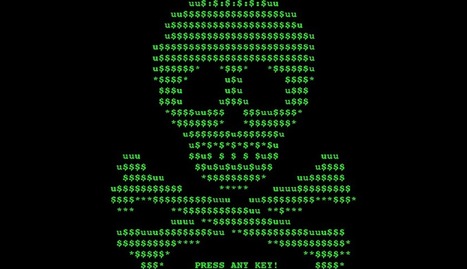





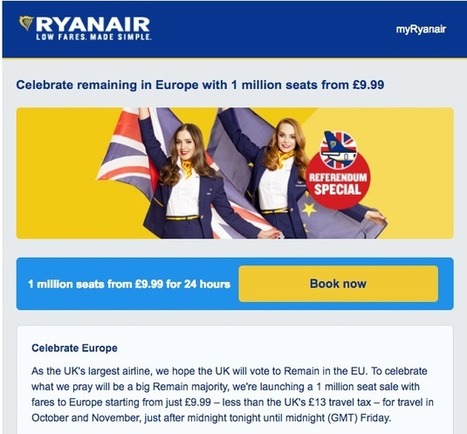
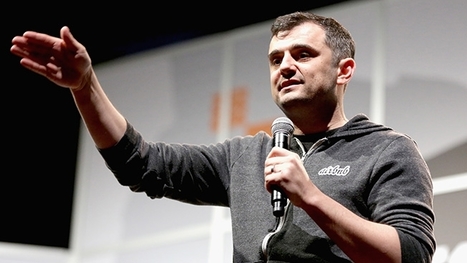


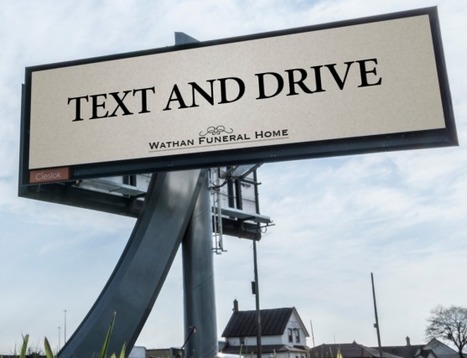
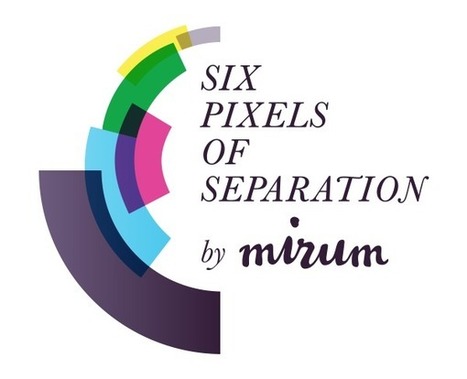






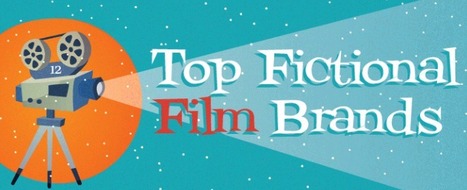



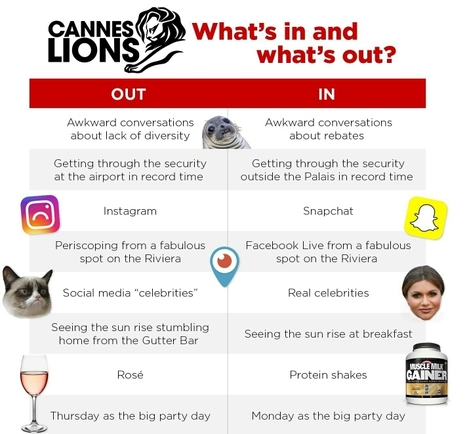


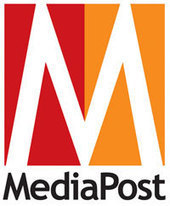








Check out the Gmail tip in particular.